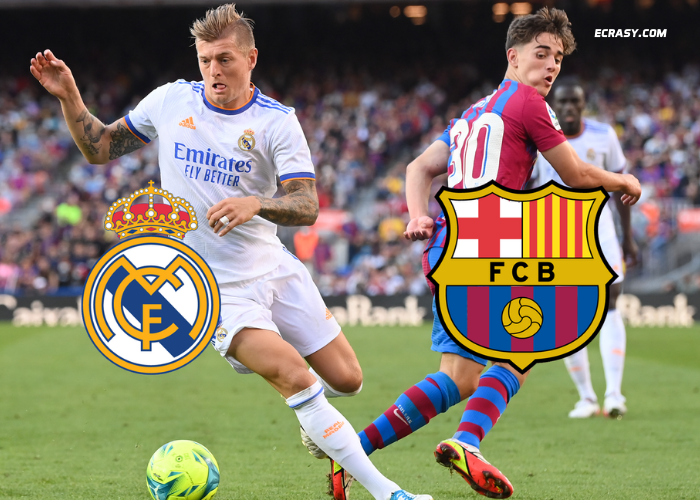Football is not just a sport; it’s a religion for many. And when we talk about the El Clásico, the contest between Barcelona and Real Madrid, we are delving into one of the most sacred and fiercely fought rivalries in the world of sports.
Both these clubs have a history that dates back over a century, and their matchups have become the heartbeat of Spanish football. This article unravels the intricacies of this storied rivalry.
Historical Overview
Barcelona and Real Madrid were founded in 1899 and 1902, respectively. From their early days, both clubs represented more than just football.
Barcelona was seen as a symbol of Catalan identity, often opposing the centralized power of Madrid. In contrast, Real Madrid was often viewed as the establishment club, representing Spanish unity and royal patronage.
Memorable Matches
1980 Copa del Rey Final: Barcelona and Real Madrid faced off in a final that has since become legendary. Barcelona won 2-1, marking a pivotal moment in their history.
2011 Champions League Semi-final: The two Spanish giants clashed on the European stage. Barcelona emerged victoriously, advancing to the final and later clinching the title.
5-0, 2010: Barcelona’s thumping win at the Camp Nou remains one of the most dominant performances in El Clásico history.
Iconic Players
Barcelona: Lionel Messi, arguably the greatest footballer ever, has been a thorn in Real Madrid’s side for over a decade. Other icons include Xavi, Iniesta, and Ronaldinho.
Real Madrid: Cristiano Ronaldo, Raul, and Zinedine Zidane are just a few names in a long list of legends that have donned the white jersey.
Beyond Football: Political and Social Ties
The El Clásico has never been just about football. It’s a representation of the historical, political, and social divide between Catalonia and the rest of Spain. Barcelona’s motto “Més que un club” (More than a club) encapsulates this sentiment.
Economic Powerhouses
Both clubs are among the richest in the world. Their economic power and influence extend beyond the pitch, influencing media rights, merchandise, and even property markets in their respective cities.
Fan Cultures
Both sets of fans, the Culés for Barcelona and Los Blancos for Real Madrid, are known for their passionate support. Their dedication has led to both stadiums, Camp Nou and Santiago Bernabéu, becoming fortresses for their teams.
Tactics and Styles of Play
Barcelona, especially under Pep Guardiola, was renowned for its Tiki-Taka style, emphasizing possession and short passes. Real Madrid, on the other hand, has often been seen as a counter-attacking side, using their speed and skill to deadly effect.
The Future
With Messi’s recent departure from Barcelona and Real Madrid entering a new era post-Ronaldo, the dynamics of El Clásico are set to evolve. Yet, the passion and intensity will never wane.
Conclusion
The Barcelona vs Real Madrid rivalry is not just a game; it’s an embodiment of history, culture, and passion. Every time these teams meet, it’s more than three points at stake. It’s about pride, honor, and a place in history.
As long as football exists, the heartbeat of Spanish football, the El Clásico, will continue to captivate fans worldwide.
